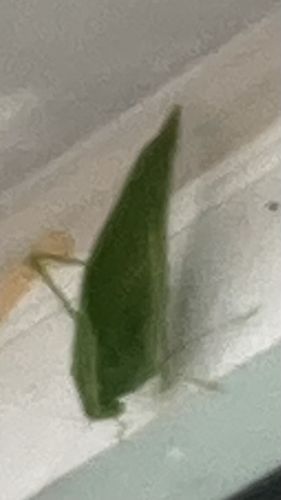Praying Mantis
Scientific Name: Mantis religiosa (or another species within Mantodea, as identification to species level is difficult from this image)
Order & Family: Order: Mantodea, Family: Mantidae (or various families within Mantodea, as the image doesn't allow for more specific identification of the family)
Size: Typically from 2 to 6 inches (5 to 15 cm) in length, though some smaller and larger species exist. The size varies greatly depending on the specific species.

Natural Habitat
Found in a wide range of habitats, particularly in temperate and tropical regions. They prefer areas with abundant vegetation, such as gardens, meadows, forests, shrublands, and grasslands, where they can camouflage themselves and find prey.
Diet & Feeding
Strictly carnivorous, feeding primarily on other insects such as flies, moths, butterflies, crickets, grasshoppers, and sometimes even small vertebrates like lizards, frogs, birds, and rodents, especially larger species. They use their strong, spined forelegs to quickly seize and hold their prey.
Behavior Patterns
Mantises are predatory insects known for their distinctive upright posture and \"praying\" forelegs. They are ambush predators, lying in wait for prey. They are mostly solitary creatures and are well-camouflaged, blending into their surroundings. Mating often involves the female consuming the male, particularly the head, during or after copulation, which is thought to provide nutrients for egg development.
Risks & Benefits
Benefits: Praying mantises are beneficial to gardens and agriculture as natural pest controllers, helping to reduce populations of various insect pests. They pose no risk to humans; they are not venomous and generally do not bite unless provoked, and even then, a bite is harmless. Risks: None to humans. They might be considered a risk to smaller beneficial insects like bees and butterflies, as they are generalist predators.
Identified on: 8/21/2025